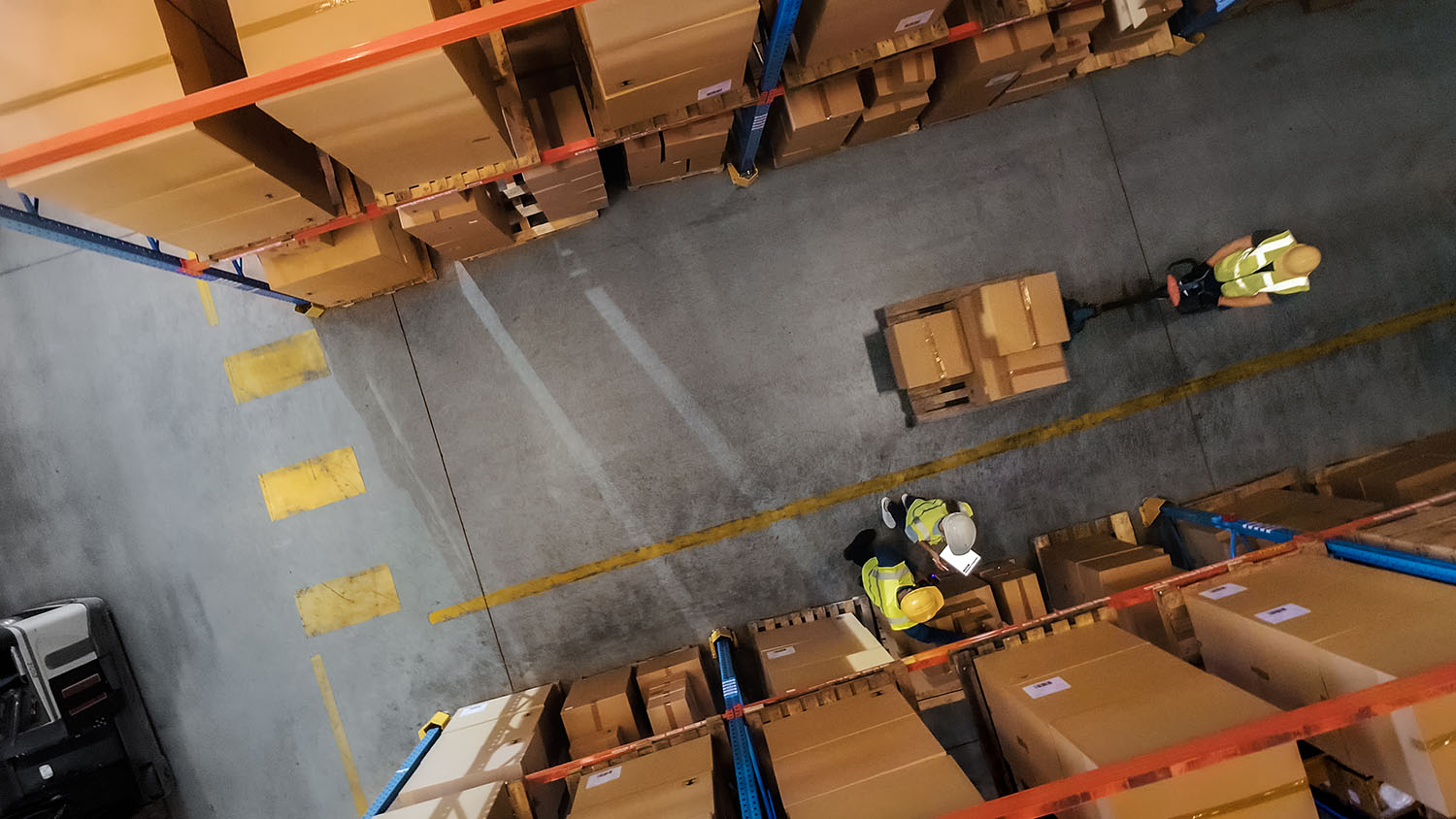You may have seen the word “drayage” on freight invoices or heard it at the ports and rail yards. What is drayage, and why does it cost so much?
For 3PLs and warehouse teams, drayage is the short-distance transport that moves containers from a ship or railcar to a nearby warehouse or distribution center. It’s a small segment in the supply chain, but one of the most used terms in logistics.
When drayage breaks down, inventory runs late, client service-level agreements (SLAs) get missed, and detention fees start adding up.
In this article, we’ll discuss what drayage in logistics is, how it works within 3PLs, and the different types.
What Is Drayage and Its Importance for 3PLs
Drayage is the short-distance movement of freight, usually by shipping containers, between key points in the supply chain. Most drayage trips are under 100 miles and are completed by truck.
You can think of it as the first local handoff after long-haul transport. For example, when a container arrives at a seaport, a drayage truck moves it to a nearby warehouse, rail terminal, or cross-dock facility. From there, the cargo continues its journey inland by rail or truck.
For 3PLs, drayage is the leg of transportation that brings items to the warehouse, and managing their drayage closely helps 3PL managers plan better, cut fees, and avoid broken SLAs and problems with inventory.
How Does Drayage Work: A Simple Breakdown
The two key points in the logistics chain are typically local transfers between major transport hubs and freight processing or receiving facilities.
Common routes include:
- From a seaport to a warehouse or distribution center
- From an intermodal rail yard to a 3PL facility or cross-dock location.
Drayage trips are short by design and typically completed the same day. Despite the distance, precise coordination is important.
Common Drayage Terms Every 3PL Should Know
Understanding drayage also means understanding the moving parts that make it work:
- Drayage Carrier: A trucking company that handles short container moves. They usually operate near ports, rail terminals, and industrial freight hubs.
- Chassis: A wheeled trailer frame that containers are loaded onto for road transport.
- Dray-Off: A common move where a container is lifted off a railcar or stack and delivered by truck to a nearby warehouse or 3PL facility.
Each part must align in real time, as one missed handoff can delay the entire supply chain. A missed pickup or unavailable chassis can leave warehouses waiting and carriers facing detention fees.
Types of Drayage Services (And What They Actually Look Like)
This strategy can take different forms depending on where the container is going and how it needs to get there.
| Type | Use Case | Typical Distance | Who Uses It Most |
| Port Drayage | Moving containers from the port to a nearby warehouse or cross-dock | 10–30 miles | 3PLs, importers, freight forwarders |
| Door-to-Door Drayage | Direct delivery from port or rail to the final facility (no intermediary stops) | Varies | Retailers, DTC brands, B2B distributors |
| Shuttle Drayage | Temporary container storage when the final destination isn’t ready to receive | Local | 3PLs, carriers handling overflow |
| Inter-Carrier Drayage | Transfers between different transport providers, like a port to a rail terminal | 10–50 miles | Intermodal operators, large freight networks |
| Intra-Carrier Drayage | Transfers within the same carrier’s system (e.g., from a port to that carrier’s rail hub) | Local | Rail companies, integrated carriers |
| Expedited Drayage | Fast, time-sensitive container moves, often tied to perishable or high-priority goods | Local | Food & Beverage, pharma, e-commerce |
| Long-Haul Drayage | Regional or extended container haul beyond the typical drayage radius | 100+ miles | Rural distribution, limited-access locations |
Drayage vs Intermodal vs Container Freight: Difference Explained
If you’re new to logistics, terms like drayage, intermodal, and container freight can sound similar. But they differ by distance, transport method, and cargo type. You already know what drayage is, so we will focus on the intermodal and container freight explanation below.
Intermodal Shipping
Intermodal drayage moves containers using two or more transportation modes, such as ocean, rail, and truck. The cargo stays inside the same container for the entire journey. Drayage is often part of this, covering the short truck segments.
- Scope: Regional to long-haul
- Mode: Multimodal — rail, truck, or ocean (at least two modes involved)
- Cost: More efficient for longer distances, especially when rail is used.
Container Freight
Container freight refers to the cargo itself packed into standardized containers. These containers are used in both drayage and intermodal shipping, but the term focuses more on what’s inside and how it’s loaded, not how it moves.
- Scope: Any distance
- Mode: Can be used in truckload, rail, or ocean shipping
- Cost: Depends on container type, weight, commodity, and route.
Quick Comparison: Drayage vs Intermodal vs Container Freight
| Term | Focus | Scope | Mode of Transport | Common Use Case |
| Drayage | Short-distance container moves | Under 100 miles | Truck only | Moving containers from the port to the warehouse |
| Intermodal | Multi-mode transport | Regional to long-haul | Rail plus Truck (or more) | Cross-country or international shipping |
| Container Freight | Cargo packed in containers | Any distance | Truck, rail, or ocean | Shipping goods in 20 or 40-foot containers |
Why Drayage Matters in the Modern Supply Chain
For 3PLs, reliable this strategy can be the difference between meeting SLAs and falling behind during peak season.
Keeps E-commerce Fulfillment on Track
E-commerce depends on tight inventory flows. And fulfillment centers need consistent, timely inbound freight to keep orders moving. Drayage is often the first handoff after international shipping, connecting ports to warehouses or cross-docks.
For example, an Amazon FBA facility near the Port of Los Angeles may rely on 50 or more container drayage moves per day during peak season. Without timely pickups, containers sit at the port, inventory stalls, and lost sales add up quickly.
Helps 3PLs Avoid Port Congestion and Labor Delays
Ports are complex, and delays can happen, especially during labor disruptions, chassis shortages, or peak volume surges. If drayage services miss pickup windows, containers pile up, extra fees rise, and warehouse receiving schedules fall apart.
A well-managed strategy helps 3PLs reduce dwell time, avoid extra fees, and keep warehouse docks moving on schedule.
Accelerates First and Final-Mile Handoffs
Drayage is the handoff point between long-haul and last-mile delivery. If that connection is slow or unreliable, it drags down the entire delivery timeline.
Faster drayage means containers reach the warehouse sooner, stock-keeping units (SKUs) are slotted faster, and outbound fulfillment stays on pace. For high-volume 3PL operations, even a few hours saved on inbound can translate into sharper metrics across pick rates, order cycle time, and customer satisfaction.
How Much Does Drayage Cost? A Complete Breakdown
Drayage costs can increase quickly, especially when things don’t go as planned. For 3PLs managing inbound freight from ports or rail yards, knowing what’s on the invoice helps prevent unnecessary fees and improves cost control.
Here’s a breakdown of the most common charges:
- Per-container move: The base fee for transporting a container from one location to another. This typically includes a set mileage range and basic handling. Longer distances or special handling (e.g., overweight loads) increase this fee.
- Fuel surcharge: A variable fee added on top of the base rate to account for fuel costs.
- Chassis fee or chassis split: If the port doesn’t supply a chassis, or if it needs to be picked from a separate location, carriers apply a chassis split fee. These can range from $50 to over $150 per move.
- Detention: Detention is charged when a container is held too long after pickup, such as at your warehouse or facility. Delays in unloading or returning the container trigger these fees.
- Demurrage: Charged when a container sits too long before pickup, typically at the port.
How to Reduce Drayage Costs
You can’t control every delay, but these tips can help reduce spend:
- Schedule pickups early to avoid demurrage
- Confirm chassis availability before the container arrives, especially during peak seasons
- Consolidate loads when possible to reduce the number of separate container moves
- Partner with reliable carriers to secure better rates and consistent scheduling.
You can also use visibility tools to track container status and coordinate across your transport management system (TMS) or warehouse management system (WMS).
Real-World Drayage Scenarios (So You Can Picture It Clearly)
The examples below illustrate how different industries rely on drayage to move containers efficiently.
1. Cold Chain Logistics: Perishable Food Delivery
A temperature-controlled 3PL receives reefer containers at the Port of Savannah. These shipments carry fresh produce from South America that must reach a nearby cold storage facility within hours.
- Drayage’s role: Time-sensitive move from port to cold warehouse
- Risk if mishandled: Product spoilage, rejected loads, and high transportation waste
Same-day drayage with refrigerated trucks is scheduled to protect the cold chain. If the transfer is delayed, temperature compliance is lost, and the entire shipment may be scrapped.
2. Retail Distribution: Port to Cross-Dock
A 3PL handling imports for a national retailer drays containers from the Port of Long Beach to a cross-dock just 15 miles inland. Workers unload, scan, and relabel pallets using UCC-128 barcodes for outbound store deliveries.
- Drayage’s role: Rapid inbound to support same-day relabeling and outbound shipping
- Risk if mishandled: Missed store shipments, labor backups, and delayed final-mile distribution
Tight drayage timing is critical. A late truck can disrupt the cross-dock workflow and delay deliveries to multiple store locations.
3. Intermodal Operations: Rail to 3PL Warehouse
A Midwest-based 3PL uses intermodal drayage to lower long-haul costs. Containers arrive by rail at a local terminal and are immediately drayed to the warehouse 12 miles away.
- Drayage’s role: Final local leg after rail transport
- Risk if mishandled: Demurrage charges, missed receiving windows, and inventory delays
Successful coordination depends on chassis availability and syncing with train arrival times. If drayage carriers miss their window, costs mount quickly.
From Port Arrival to Final Delivery, Simplify 3PL Logistics with Da Vinci
Once containers reach the port, timing is critical. With Da Vinci’s WMS, 3PLs manage drayage as part of a single, connected system. The platform helps assign carriers, track container status, schedule yard slots, and coordinate receiving teams, all in one place.
You get full visibility into inbound containers, ETAs, and aligned workflows that reduce delays and keep inventory moving. Da Vinci gives 3PLs end-to-end control from port to drayage to warehouse. Book a free demo today.



